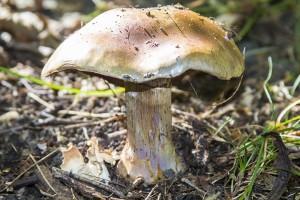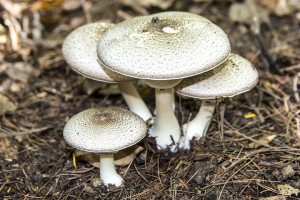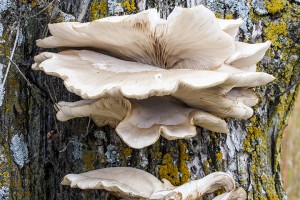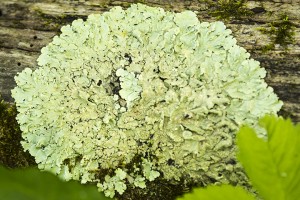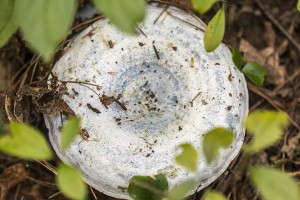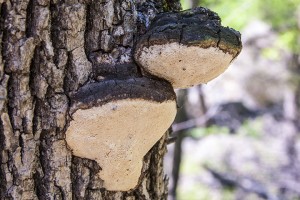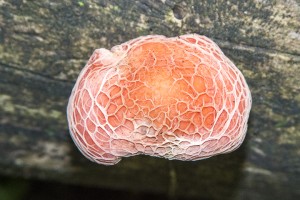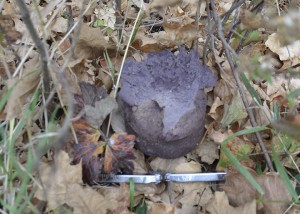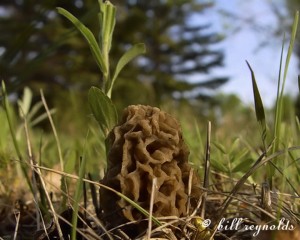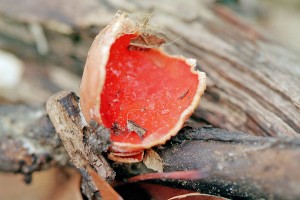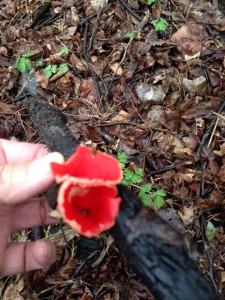Wood Blewit (Clitocybe nuda) is very common and widespread. It is popular with mushroom foragers because it is plentiful and edible. It is found on the ground, often found in rings or arcs, in woodlands, gardens, and compost piles. It appears mostly in the cool months from September to December but may appear in spring and summer.
This species is identified by growing on the ground in woods; its large size; thick stalk; purplish cap, stem and gills fading to brown with age; and pale spore print.

